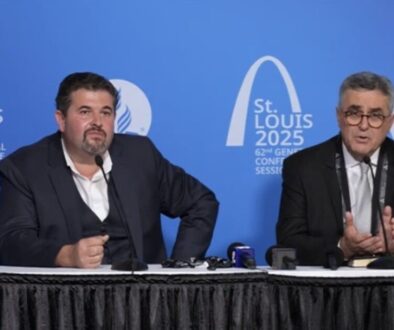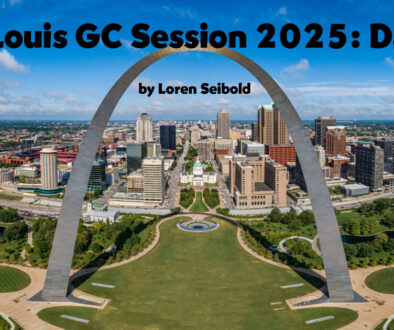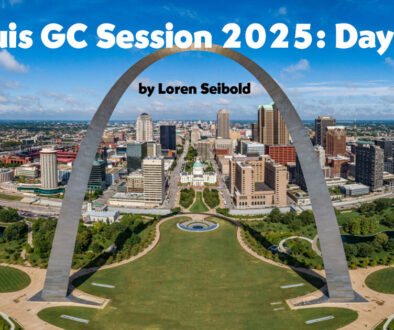Speaking Christian and a Dialect of Christian known as Adventist
by Ervin Taylor
Ervin Taylor
“Christian language has become a stumbling block in our time. Much of its basic vocabulary is seriously misunderstood by Christians and non-Christians alike. Big words like salvation, saved, sacrifice, redeemer, redemption, righteousness, repentance, mercy, sin, forgiveness, born again, second coming, God, Jesus, and Bible… have acquired meanings that are serious distortions of their biblical and traditional meanings.” This is the opening sentence in the introduction of Marcus Borg’s 2011 volume Speaking Christian with the subtitle Why Christian Words have Lost Their Meaning and Power—and How They Can Be Restored.
Borg is best known for his books Meeting Jesus Again for the First Time and the Heart of Christianity. He is the emeritus Hundere Distinguished Professor of Religion and Culture, at Oregon State University and Canon Theologian at Trinity Episcopal Cathedral in Portland, Oregon.
Borg suggests that the misunderstandings of the language of traditional Christianity are the products of two major causes. The first is the “literalization of language in the modern period,” while the second he characterizes as “heaven-and-hell Christianity.”He insists that when these two elements are present, it “diminishes and distorts the meaning of Christian language.”
He notes that Christians are “deeply divided by different understandings of shared language.” About half of American Christians believe that “biblical language is to be understood literally within a heaven-and-hell framework that emphasizes the afterlife, sin and forgiveness, Jesus dying for our sins, and believing.” Roughly, the other half have moved on to use an alternate vocabulary to approach their understanding of Christianity to the degree that Borg insists that the differences between these two ways of understanding the message of Jesus as interpreted through Paul, results, for all practical purposes, in two separate religions.
Expanding our comments beyond those contained in the Borg volume, these two ways of approaching Christianity that he identifies are currently broadly represented, on one hand, by fundamentalist and conservative Protestant evangelicals and, on the other, by modernist or liberal Protestantism. In many cases, historic Protestant churches, such as the Lutheran and Presbyterian traditions, have undergone organizational splits which, in the early parts of the 20th century, had separated “modernists” from “evangelicals-fundamentalists” into separate organizational traditions. Even though its historical roots preceded the Fundamentalist-Modernist split in other parts of Protestantism, the Seventh-day Adventist (Adventist) Christian variant has generally aligned itself with the conservative and fundamentalist wing of Protestantism. However, because it adopted a non-biblical source of religious authority in the writings of Ellen White, it was widely viewed as a cult in the minds of many fundamentalists and evangelicals. This changed to some degree beginning in the late 1950s.with the publication of Questions on Doctrine. Interestingly, this book created a backlash in some traditional parts of Adventism which accused denominational leadership of “selling out” so-called historic Adventism.
Some who belonged to what might be characterized as the nascent progressive or liberal wing of Adventism viewed these developments within institutional Adventism as the equivalent of rearranging the deck chairs on the theological Titanic of Adventism and generally ignored these disputes. Most thought there were much more fundamental issues that classical Adventism had to address if a more mature Adventism was to emerge to make any meaningful contribution to the larger First World Christian community. Failure to do that would consign it to the intellectual and cultural backwaters to become a museum-level religious institution.
One of these areas involved a vocabulary that had evolved within Adventism by which it defined itself. In a sense, the terms that were used in its internal discourse might be viewed as one part of an Adventist “dialect” which reflected the subculture that Adventism had created over its corporate history since its creation in the mid-19th century. Some of these terms and phrases included remnant to refer to corporate Adventism, in the truth to refer to the state of those belonging to corporate Adventism, out of the truth for those who had left the Adventist Church, and truth-filled literature to refer to written materials published by corporate Adventism. The writings of Ellen G. White were often termed the Spirit of Prophecy. The grand metanarrative of Adventism which had been assembled by White was referred to as The Great Controversy. It was even argued that there was a right (orthodox) and wrong (heterodox) way to pronounce the word “Adventist.” (I can never remember which is supposed to be the orthodox way, ad-VEN-tist or AD-ven-tist.)
Like the words that Borg has identified as creating major misunderstandings for Christianity in general, a number of words and terms used in traditional Adventism can, for many, be considered a stumbling block that obscures and confuses more than accurately describing contemporary First World Adventism. Just as dictionaries are in need of being updated as languages evolve, the Adventist vocabulary is in great need of being updated if clarity and understanding are to be advanced in First World Adventism.
One archaic term that needs to be totally rethought or completely dropped is the term “Remnant” as applied to the Adventist Church. This word had great meaning to the small group, the “Little Flock,” that gathered together around Ellen White after 1844. This group needed some way of viewing what they were doing as being of cosmic significance and thus they applied to themselves the term “Remnant.” They (as opposed to all of the other apostate religious groups of their day) believed in all of the Hebrew Ten Commandments and “had” the “Spirit of Prophecy” (which they identified as Ellen White); they were also able to see themselves in the book of Revelation. Thus the term conferred great consolation. Even if they were a tiny group of ex-Millerites living in northeastern United States, they had “the” Truth and could point to the Bible to validate their existence.
We can wonder whether certain parts of the contemporary Adventist tradition in the First World, now more than a century removed from that early phase of development, can look squarely at the traditional Adventist dialect of Christianity, understand how and why certain words were chosen, and leave them behind. Other parts of contemporary Adventism may continue to see value in retaining the use of these terms and we should affirm their right to continue to use them just as certain parts of the Adventist Church may not wish to ordain women as pastors while others are proceeding to do just that. It appears that if Adventism is to have a future without an organizational split, it must quickly adopt a pluralist way of moving forward.



